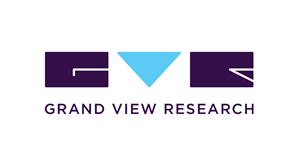U.K. Wearable Medical Devices Market Summary
The UK wearable medical devices market size was valued at USD 1.21 billion in 2023 and is projected to grow at a compound annual growth rate (CAGR) of 26.3% from 2024 to 2030. This robust market expansion is primarily driven by ongoing research and innovation, the growing utilization of remote patient monitoring systems, and the increasing adoption of home healthcare solutions. Moreover, technological advancements, along with strategic mergers and acquisitions, continue to open up new growth avenues. A heightened public focus on maintaining fitness and a healthier lifestyle also plays a vital role in broadening the overall market scope for wearable medical devices.
Sedentary lifestyles are increasingly contributing to the rise in lifestyle-related chronic conditions such as diabetes, obesity, and hypertension. These conditions have led to a heightened demand for continuous physiological monitoring. Wearable medical devices can integrate seamlessly with healthcare data platforms, enabling real-time transmission of patient data to physicians, who can then make more informed clinical decisions. This capability to support ongoing care management highlights the growing need for individualized health monitoring. Furthermore, with non-communicable diseases accounting for a rising share of mortality, the utility and demand for wearable medical technology continue to rise steadily across the UK healthcare landscape.
Key Market Trends & Insights
- The diagnostic devices segment led the UK wearable medical devices market in 2023, accounting for a market share of 62.0%. This dominance is largely attributed to the increasing incidence of neurological disorders. Additionally, growing public awareness of neurological wearables and their capacity to continuously evaluate cognitive functions during everyday tasks is fueling the expansion of this segment. These devices provide valuable insights for both clinicians and patients, offering timely detection of changes in neurological health that may otherwise go unnoticed until more serious symptoms develop, thereby improving patient outcomes and enabling proactive disease management.
- In 2023, the clip/strap/bracelet segment emerged as the leading form factor and is anticipated to register the fastest CAGR during the forecast period. Smartwatches in particular are expected to be the key driver in this category, owing to their multifunctionality. These devices are capable of monitoring a wide range of physiological parameters, including heart rate, respiratory rate, and movement. In addition to their health tracking functions, smartwatches are also valued for their connectivity features such as Bluetooth and voice command compatibility, making them convenient tools for both users and healthcare professionals managing remote care.
- The home healthcare segment dominated the UK wearable medical devices market in 2023. This is due to the increasing integration of wearable technologies into at-home care routines. These devices are typically equipped with advanced sensors and wireless connectivity, allowing clinicians to track patients’ vital signs remotely. The ability to collect continuous health data outside of clinical settings not only enhances patient comfort but also reduces hospital visits and improves management of chronic illnesses. This trend supports the broader move toward more decentralized and patient-centric healthcare delivery models throughout the UK and other developed healthcare systems.
- In 2023, consumer-grade wearable medical devices held the largest market share, primarily due to their intuitive user interface and strong focus on tracking personal health metrics and fitness goals. These devices appeal widely to individuals aiming to proactively manage their health and wellness. Their popularity is further enhanced by integration with mobile apps, gamification features, and social sharing capabilities, encouraging consistent usage. The surge in health-conscious behavior and preventive care preferences across the population, particularly among tech-savvy users, has amplified demand for these easy-to-use, yet technologically advanced health monitoring devices.
- Pharmacies dominated the distribution channel for wearable medical devices in 2023. This can be attributed to the extensive accessibility and presence of pharmacies across urban and rural regions, making it convenient for consumers to purchase wearable devices without navigating complex procurement processes. Moreover, pharmacies often offer product guidance, increasing consumer confidence in usage and brand choice. Their ability to serve as both retail points and advisory hubs positions them as key stakeholders in increasing the adoption rate of wearable medical devices, especially among users who may be less inclined to purchase through online or specialty medical platforms.
Order a free sample PDF of the U.K. Wearable Medical Devices Market Intelligence Study, published by Grand View Research.
Market Size & Forecast
- 2023 Market Size: USD 1.21 billion
- 2030 Projected Market Size: USD 6.25 billion
- CAGR (2024 - 2030): 26.3%
Key Companies & Market Share Insights
Some of the key players operating in the market include Koninklijke Philips N.V.; Fitbit, Covidien (Medtronic); Omron Corp; Withings; Everist Genomics and Polar Electro.
- Philips sensing systems are designed and validated to provide accurate readings in the application. Wearable sensing technology uses an optical sensorto track volume variations in blood and track body motion.
- Everist Genomics and Intelesens Ltd. are some of the other market participants in the UK wearable devices market.
- Everist Genomics develops and markets Prognostic and diagnostic technologies. The company provides molecular tests based on genes to predict the return of cancer.
Key Players
- Koninklijke Philips N.V.
- Fitbit
- Garmin
- Covidien (Medtronic)
- Omron Corp.
- Withings
- Polar Electro
- Everist Genomics
- Intelesens Ltd.
Explore Horizon Databook – The world's most expansive market intelligence platform developed by Grand View Research.
Conclusion
The UK wearable medical devices market is poised for strong growth driven by rising demand for real-time health monitoring, chronic disease management, and personalized care. Innovations in diagnostic tools, especially for neurological applications, continue to boost market value. Home healthcare adoption and user-friendly consumer-grade devices are accelerating usage across age groups. Distribution through accessible pharmacy networks supports mainstream availability. As sedentary lifestyles and non-communicable diseases persist, wearable medical technology is becoming central to early detection and health management. With continued investment in technology and healthcare integration, the UK market will remain on an upward trajectory through 2030 and beyond.





